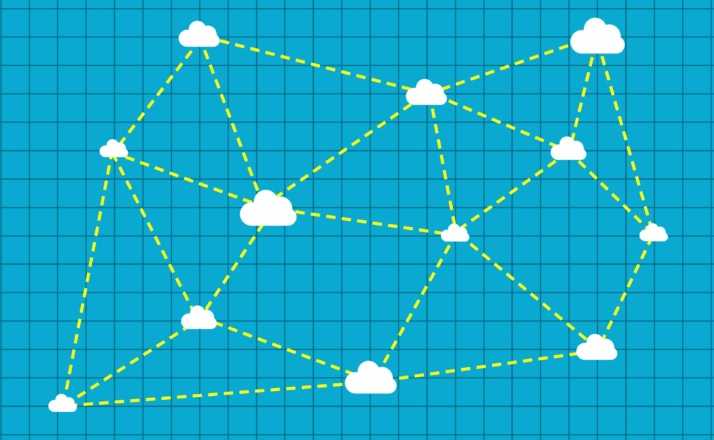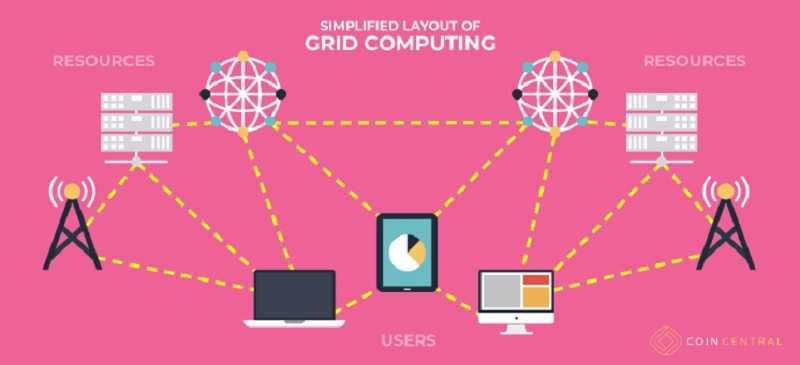
Grid computing, a descendant of the cloud and big brother to distributed computing.
Think of grid computing as the intersection of two core systems of organization: cloud computing and public utilities like electricity. At this intersection, grid computing is enabling you to tap into computational resources, centralized and not. Just like you would tap into the nearby energy lines for some of those glorious electrons that we rely on.
A modern power grid will have many sources of input. Power plants, for example, contribute a lot to the power grid but burgeoning technologies, such as solar panels and windmills, are democratizing power production.
Independent and artisanal power producers can contribute to the power grid and receive compensation. In some cases, this is excess energy.
Farmers, for example, may have solar panels to generate cheaper electricity locally. However, the farmer cannot store any unused electrons for future use, so they may choose to route that surplus energy back to the energy grid, where others can use it. One person’s wasted electrons are another’s fully charged Tesla.
Grid computing is much like the electricity grid. Contributors, big and small, can add to the grid. Users can tap into the computational grid and access services independent of the contributor.
The Cloud, Grid, and Distributed Computing
To better understand what grid computing is and its nuanced differences from distributed computing, it will be easier to first understand the barrier and limitations that grid computing is able to overcome. In other words, seeing the problems grid computing can solve will help us better understand what grid computing is.
The Limits of Cloud Computing Is Where the Grid Shines
Grid computing is a subset or extension of cloud computing. In a nutshell, cloud computing is the outsourcing of computational functions. A common cloud service, like cloud data storage from Google Drive or Dropbox, lets a customer store their data with those companies.
Someone looking to use cloud data storage chooses between providers like Google Drive, Dropbox and iCloud. The company they go with would then be their provider of cloud storage. Customer support, troubleshooting, billing, networking infrastructure, and all aspects to providing the cloud service to the customer would then come directly and solely from the company they choose.
Pretty straightforward, right? One customer, one provider. However, we are looking for the limitations of cloud computing. Where do the perks of cloud computing fall short and leave room for other organizational structures like grid computing?
Common Criticisms of Cloud Computing:
- User resources are committed to a single symmetric multiprocessing (SMP) system.
- Unused computing resources sit idle and are locked into a single task until it is complete.
- Relatively limited scalability.

Evolving Cloud Limitations with Grid Computing
Keeping in mind the parallels that grid computing has with a public utility grid, this type of computational organization can alleviate some of the common criticisms limiting cloud computing.
Let’s look over each of these claims and examine how a grid system could be more beneficial for a user over a traditional cloud service.
Cloud Limitation #1: User resources are committed to a single symmetric multiprocessing (SMP) system.
I’ll use a really basic example to showcase this pain point. There is a neural scientist looking to crunch two data sets (Set A and Set B). These data sets are huge and she’ll need to outsource the task to a cloud service.
The cloud service will have no problem running these data sets and she happily rents one machine from them to process her datasets. Remember that her datasets are exclusive to each other and need to be processed separately.
This means that the single SMP machine she leased will run Set A followed by Set B. Her single machine is unable to process both data sets simultaneously.
No big deal though, the cloud machines she leased are heavy duty and tear through the massive data sets in less than a few hours each. Processing the data will take less time than a full nights sleep for the scientist.
Now, what happens if she needs to do the same processing but for 100 data sets. Her budget still only gives her enough funding to access one cloud SMP machine. Being a person of science, she quickly does the math and discovers that it will take nearly two weeks to process all that data!
This article was originally posted on https://coincentral.com/grid-computing-the-powers-of-distributed-cloud-computing/



Leave a Reply